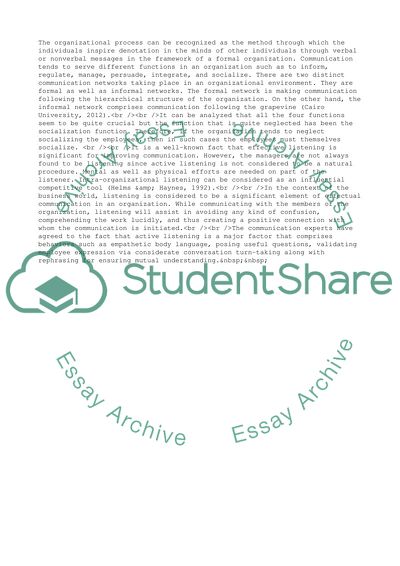Cite this document
(Organizational Communication Concepts and Skills Coursework Example | Topics and Well Written Essays - 2000 words - 1, n.d.)
Organizational Communication Concepts and Skills Coursework Example | Topics and Well Written Essays - 2000 words - 1. https://studentshare.org/management/1780132-organizational-communication-concepts-and-skills
Organizational Communication Concepts and Skills Coursework Example | Topics and Well Written Essays - 2000 words - 1. https://studentshare.org/management/1780132-organizational-communication-concepts-and-skills
(Organizational Communication Concepts and Skills Coursework Example | Topics and Well Written Essays - 2000 Words - 1)
Organizational Communication Concepts and Skills Coursework Example | Topics and Well Written Essays - 2000 Words - 1. https://studentshare.org/management/1780132-organizational-communication-concepts-and-skills.
Organizational Communication Concepts and Skills Coursework Example | Topics and Well Written Essays - 2000 Words - 1. https://studentshare.org/management/1780132-organizational-communication-concepts-and-skills.
“Organizational Communication Concepts and Skills Coursework Example | Topics and Well Written Essays - 2000 Words - 1”. https://studentshare.org/management/1780132-organizational-communication-concepts-and-skills.


